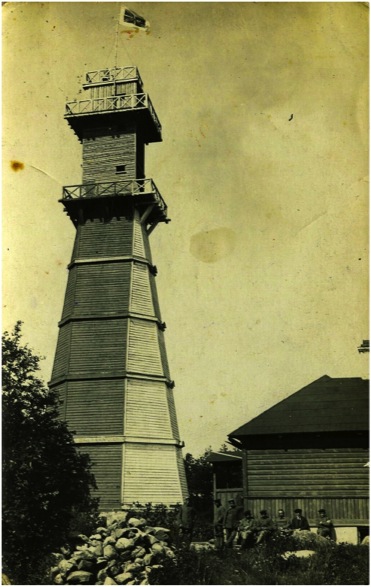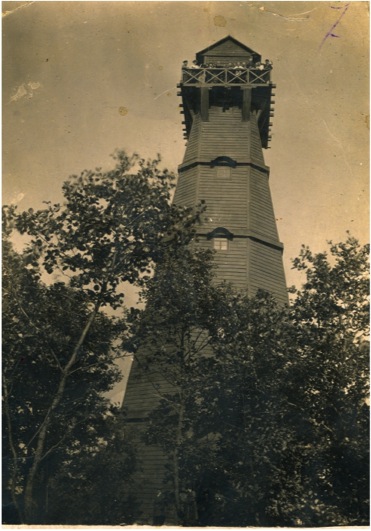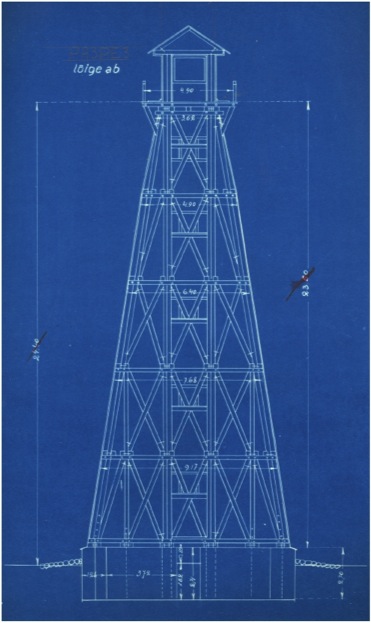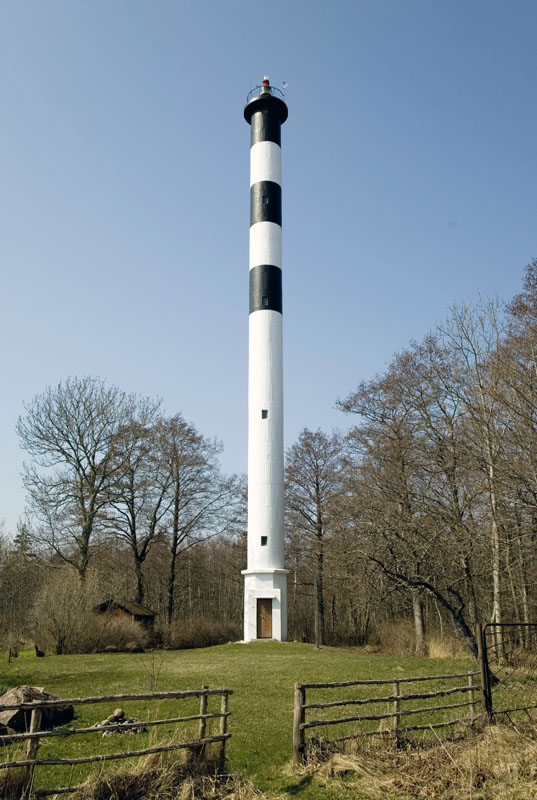
The upper lighthouse is located on the eastern shore of the island of Abruka and helps to navigate the western part of the Gulf of Riga and the shipping lane of the port of Romassaare. The lighthouse, together with the lower lighthouse at a distance of 670 m, forms a target that helps to pass safely between Saaremaa and Allirahu. The Abruka lighthouse has preserved both its structure and its historical technological systems in a relatively complete state. Of the former service buildings, a wooden dwelling house built in 1911, a cellar made of ore stone and concrete built in 1928 and a log barn built of timber are still preserved.
The lighthouse was built in Abruka in 1897 to ensure the safety of shipping traffic, which had been boosted by the opening of the port of Romassaare. Completed in 1897, the first lighthouse was a 28-metre wooden, white-planked, octagonal trunk pyramid with a balcony and a four-tiered firebox at the top. The lighthouse had a white dioptric directional lantern. In the lantern room was a single-flame kerosene lamp with a height of 27 m above sea level and a visibility range of 11 miles. A dwelling and a barn were also built to the lighthouse. Probably sometime during the First World War, the top of the Abruka lighthouse was raised by 9 m and two balconies were added. A circular acetylene lantern was installed on the roof. The height of the eight-storey wooden lighthouse was a remarkable 36 m, making it one of the tallest wooden buildings in Estonia in the 1920s. The light, 37 m above sea level, had a visibility of 14 miles. By 1922, the lighthouse had a telephone connection with Kuressaare.
The lighthouse was one of the largest in Estonia in terms of distance from the sea.


In 1931, a new reinforced concrete cylindrical lighthouse was built to replace the wooden lighthouse. The design of the lighthouse was selected in a competition by the engineer Ferdinand Adoff (ERA f 1091 n 1 s 1528) and was carried out by the Tallinn construction company Arronet & Boustedt. The lighthouse was 36 m high and 2 m in diameter. An ingenious slab foundation and monolithic walls gave the slender tower stability even in the face of very violent storms. The lighting system for the lighthouse was an automatic acetylene light with a ring-sector from the Swedish company AGA, which was installed on the roof of the service room. The acetylene cylinders and reducer were piped to the lighting system and located on the ground floor of the tower. The gas for the automatic lighting was supplied from the Tallinn gas factory and the acetylene factory of Eesti AGA in Kopli. The light was 37 m above sea level and had a visibility of 14 miles.
In 1950, the visibility range of the light was estimated at 10 miles. In the 1970s, the acetylene-powered strobe was replaced by an electrically-powered strobe in the historic 500 mm AGA company type station. By 1999, in addition to mains power, solar power was available and a new back-up diode lantern from Tideland Signal Ltd was installed in place of the old AGA lantern. However, the solar panels were soon removed again, as the general electricity grid and batteries were able to ensure uninterrupted operation of the lighthouse. In the future, the Maritime Administration plans to replace the ring-sector lantern with a narrower-sector device, as the light from the Abruka lighthouse is no longer visible from the west and south-west due to the overgrown forest. Its function will be replaced in this direction by a lighthouse located 0.5 miles south-west of Abruka lighthouse on the island of Vahas.
